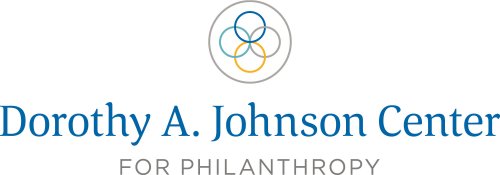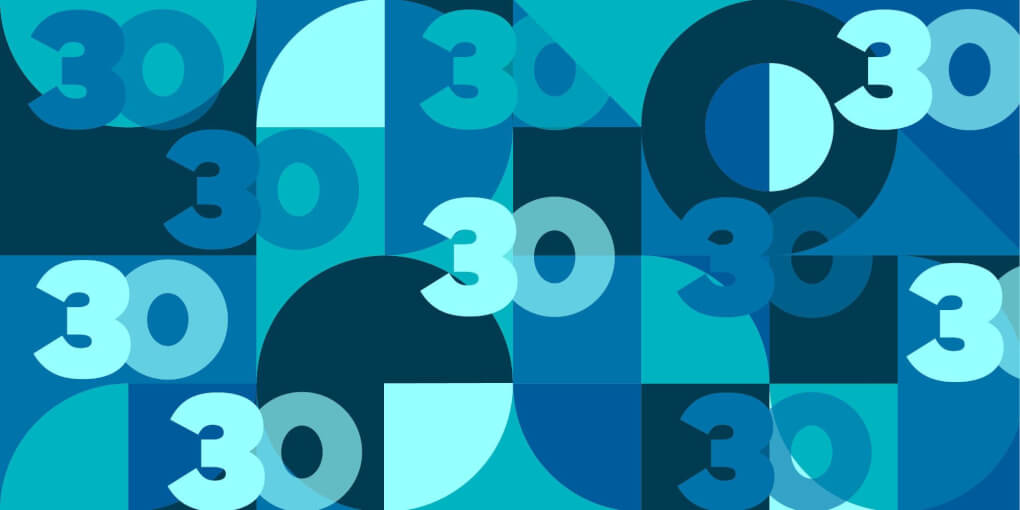

GVSU President Arend D. Lubbers announces plans for the Center for Philanthropy and Nonprofit Leadership (CPNL) at GVSU with the support of a $922,000 grant from the W.K. Kellogg Foundation.

GVSU University Libraries acquires its first titles focused on philanthropy and nonprofit leadership. Today, the collection is one of the most comprehensive of its kind in the nation.

CPNL and the Direction Center, a management resource for nonprofits, partner on programming and research, with many of the Direction Center’s programs folded into the CPNL under the leadership of Margaret Sellers Walker.

Dorothy (Dott) E. Freeman serves as the center’s director from 1996-2000.

CPNL is renamed for Dorothy A. Johnson, founding president of the Council of Michigan Foundations and GVSU board member.

Donna Van Iwaarden serves as director from 2000-2005, helping to launch the Community Research Institute at the Johnson Center, providing a home base for community data collection and analysis and innovative online tools.
Over the course of 30 years, much has changed in the world of philanthropy.
The Dorothy A. Johnson Center for Philanthropy has been there to track it all, thanks to the vision of the W.K. Kellogg Foundation, which funded the center’s startup, and President Emeritus Arend D. Lubbers, who saw how the center could help shape and grow the university.
Since its founding 1992, the Johnson Center has served as a resource for nonprofit organizations, foundations and agencies as they chart their own pathways in the world of philanthropy.
Initially called the Center for Philanthropy and Nonprofit Leadership, in 1999 the center was renamed for Dorothy “Dottie” Johnson, the trailblazing founding president of the Council of Michigan Foundations and honorary life member of GVSU's Board of Trustees.
“The center has done incredible things for people, organizations and communities,” said Johnson, an early advocate for the kind of research the center helped to pioneer. “I like to think life is better for many, and that students will understand the importance of sharing their talents and their resources with others throughout their lifetimes.”

W.K. Kellogg Foundation support allows the launch of The Grantmaking School, the first university-based program for teaching the techniques and nuances of grantmaking.

Kathryn Agard serves as executive director from 2006-2010.

A gift establishes the Russell G. Mawby Faculty Fellowship in Philanthropy, sponsoring faculty-student teams creating useful philanthropic knowledge.

The Growing Greater Good campaign secures $5 million to help fund Johnson Center operations and growth plans while laying the groundwork for the nation’s first endowed chair in family philanthropy.

The Foundation Review, the nation’s first peer-reviewed journal of philanthropy, launches. Today the review’s articles and issues are downloaded more than 5,000 times per month.
Lunch & Learn series launches, providing free learning opportunities for nonprofit practitioners.

Michael Moody joins the Johnson Center as the inaugural Frey Foundation Chair for Family Philanthropy.
James Edwards becomes executive director, serving until 2013.

Center organizes and hosts the first National Summit on Family Philanthropy in Grand Rapids.

W.K. Kellogg Foundation and Kellogg Company 25-year Employee Fund establish the W.K. Kellogg Community Philanthropy chair. Jason Franklin, inaugural holder of the chair, produces groundbreaking research on giving circles.

Our State of Generosity, a website documenting 40 years of Michigan’s philanthropic history, goes live.
Kyle Caldwell named executive director, serves until 2018.
Tracking the rise of ‘megadonors’
The center’s research and data analysis provide important information to those inside the sector but they also shed light on the ways giving is evolving.
For example, the amounts individuals give to charities has grown steadily over the years, but their percentage of overall giving coming from individuals has declined as giving by foundations surged.
Why is that?
In a 30th anniversary essay, “Philanthropy 1992-2022: What Difference Does 30 Years Make?” the Johnson Center noted that the rise in foundation giving corresponds to a concentration of wealth among higher income people as well as surges in the stock market, where foundations keep many of their assets.
“The most dramatic change is in the relative amount of total giving coming from individuals versus foundations,” Michael Moody, the Johnson Center’s Frey Foundation Chair for Family Philanthropy, wrote in the essay. “While individuals are still the largest source, they account now for only about two-thirds of total giving — whereas they were 82 percent of the total 30 years ago. This relative decline is less a result of individual giving declining, and more because the share of giving coming from foundations has risen so significantly, from less than 7 percent in 1992 to nearly 19 percent of all giving today.”
Another major shift has been the rise of the “megadonor.”
In 1992 the Ford Foundation was the largest annual grantmaking nonprofit, awarding $282 million. In 2021 the Bill and Melinda Gates Foundation awarded $5.95 billion in grants.
“Megadonors are clearly more mega now than in 1992 — and this looks like it will continue, as Bill Gates recently announced plans to give another $20 billion from his own fortune, and to increase the foundation’s giving to $9 billion per year by 2026,” Moody wrote.

First "11 Trends in Philanthropy" report publishes and is now one of the most highly anticipated and widely read reviews of trends in the field.

Two years of collaboration among the Johnson Center, Luminare Group and Center for Evaluation Innovation evolves into the Equitable Evaluation Initiative, launched by Luminare, resulting in the development of the Equitable Evaluation Framework.
Dr. Juan Olivarez is appointed Distinguished Scholar in Residence for Diversity, Equity, and Inclusion for a three-year term at the Johnson Center.
Teresa Behrens appointed executive director, serves until she retires in 2022.

e-Learning platform LearnPhilanthropy Academy launches, offering on-demand video lessons.
Center publishes Program Officer Competency Model, a professional development tool created to support a more equitable and effective philanthropic field.

Community Insight, a platform for exploring community data and powering community decision-making, becomes available to the public.
Insights beyond trends propels center
Tracking such shifts and changes makes the work being done at the Johnson Center ever more vital. Sharing that data and analysis with the community also takes on more urgency.
Each year the center provides dozens of opportunities for the GVSU and broader philanthropic community to learn via professional development training and workshops geared toward smaller nonprofits and emerging or aspiring nonprofit professionals.
Lesley Slavitt, who joined the Johnson Center as executive director in April, said the Johnson Center’s keys to success continue to be data-driven analysis and insights that go beyond trends.
“Trends are important to understand, but also the Johnson Center needs to help people understand what’s around the corner,” said Slavitt, who came to GVSU after stints as chief executive of the Fiat Chrysler Foundation and with JPMorgan Chase and its legacy companies’ foundations. “We ask what does the sector need to know? What lessons can we share?”
Some of those lessons can be found in the Johnson Center’s widely read annual look at "11 Trends in Philanthropy."
This year’s list and accompanying commentary address challenging topics like racial equity, for-profit news organizations using nonprofit business models, unionization of nonprofit employees and the backlash against ESG (environmental, social and governance) policies.
It’s that willingness to address hard questions and the opportunity for students to learn from world-class research and curriculum that make the Johnson Center an important part of GVSU’s fabric, said President Philomena V. Mantella.
“For 30 years the Johnson Center has exemplified Grand Valley’s commitment to providing global perspectives and exemplary curriculum,” she said. “The center is uniquely positioned to challenge the status quo, provide critical insights into the evolving nature of philanthropy. The center’s research and its expertise are regarded as among the best resources for data and analysis for those who give and to the organizations that benefit from philanthropic support.”







